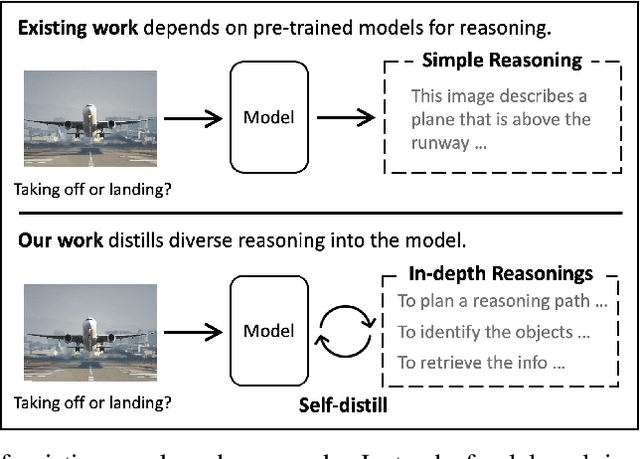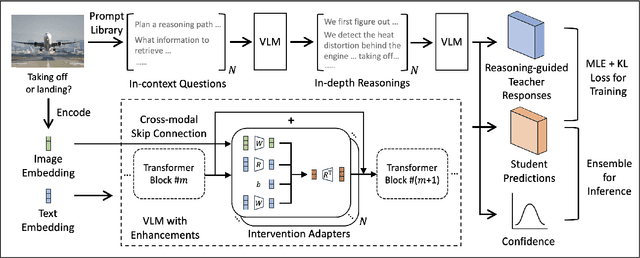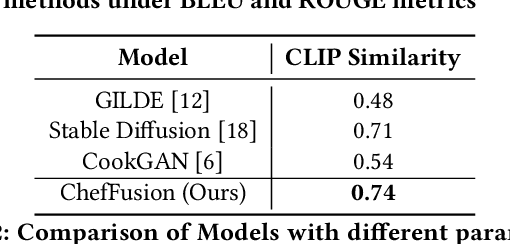Yijun Tian
Reinforcement Learning for Self-Improving Agent with Skill Library
Dec 18, 2025Abstract:Large Language Model (LLM)-based agents have demonstrated remarkable capabilities in complex reasoning and multi-turn interactions but struggle to continuously improve and adapt when deployed in new environments. One promising approach is implementing skill libraries that allow agents to learn, validate, and apply new skills. However, current skill library approaches rely primarily on LLM prompting, making consistent skill library implementation challenging. To overcome these challenges, we propose a Reinforcement Learning (RL)-based approach to enhance agents' self-improvement capabilities with a skill library. Specifically, we introduce Skill Augmented GRPO for self-Evolution (SAGE), a novel RL framework that systematically incorporates skills into learning. The framework's key component, Sequential Rollout, iteratively deploys agents across a chain of similar tasks for each rollout. As agents navigate through the task chain, skills generated from previous tasks accumulate in the library and become available for subsequent tasks. Additionally, the framework enhances skill generation and utilization through a Skill-integrated Reward that complements the original outcome-based rewards. Experimental results on AppWorld demonstrate that SAGE, when applied to supervised-finetuned model with expert experience, achieves 8.9% higher Scenario Goal Completion while requiring 26% fewer interaction steps and generating 59% fewer tokens, substantially outperforming existing approaches in both accuracy and efficiency.
MV-Debate: Multi-view Agent Debate with Dynamic Reflection Gating for Multimodal Harmful Content Detection in Social Media
Aug 07, 2025Abstract:Social media has evolved into a complex multimodal environment where text, images, and other signals interact to shape nuanced meanings, often concealing harmful intent. Identifying such intent, whether sarcasm, hate speech, or misinformation, remains challenging due to cross-modal contradictions, rapid cultural shifts, and subtle pragmatic cues. To address these challenges, we propose MV-Debate, a multi-view agent debate framework with dynamic reflection gating for unified multimodal harmful content detection. MV-Debate assembles four complementary debate agents, a surface analyst, a deep reasoner, a modality contrast, and a social contextualist, to analyze content from diverse interpretive perspectives. Through iterative debate and reflection, the agents refine responses under a reflection-gain criterion, ensuring both accuracy and efficiency. Experiments on three benchmark datasets demonstrate that MV-Debate significantly outperforms strong single-model and existing multi-agent debate baselines. This work highlights the promise of multi-agent debate in advancing reliable social intent detection in safety-critical online contexts.
CSPLADE: Learned Sparse Retrieval with Causal Language Models
Apr 15, 2025Abstract:In recent years, dense retrieval has been the focus of information retrieval (IR) research. While effective, dense retrieval produces uninterpretable dense vectors, and suffers from the drawback of large index size. Learned sparse retrieval (LSR) has emerged as promising alternative, achieving competitive retrieval performance while also being able to leverage the classical inverted index data structure for efficient retrieval. However, limited works have explored scaling LSR beyond BERT scale. In this work, we identify two challenges in training large language models (LLM) for LSR: (1) training instability during the early stage of contrastive training; (2) suboptimal performance due to pre-trained LLM's unidirectional attention. To address these challenges, we propose two corresponding techniques: (1) a lightweight adaptation training phase to eliminate training instability; (2) two model variants to enable bidirectional information. With these techniques, we are able to train LSR models with 8B scale LLM, and achieve competitive retrieval performance with reduced index size. Furthermore, we are among the first to analyze the performance-efficiency tradeoff of LLM-based LSR model through the lens of model quantization. Our findings provide insights into adapting LLMs for efficient retrieval modeling.
Enhancing Multi-hop Reasoning in Vision-Language Models via Self-Distillation with Multi-Prompt Ensembling
Mar 03, 2025



Abstract:Multi-modal large language models have seen rapid advancement alongside large language models. However, while language models can effectively leverage chain-of-thought prompting for zero or few-shot learning, similar prompting strategies are less effective for multi-modal LLMs due to modality gaps and task complexity. To address this challenge, we explore two prompting approaches: a dual-query method that separates multi-modal input analysis and answer generation into two prompting steps, and an ensemble prompting method that combines multiple prompt variations to arrive at the final answer. Although these approaches enhance the model's reasoning capabilities without fine-tuning, they introduce significant inference overhead. Therefore, building on top of these two prompting techniques, we propose a self-distillation framework such that the model can improve itself without any annotated data. Our self-distillation framework learns representation intervention modules from the reasoning traces collected from ensembled dual-query prompts, in the form of hidden representations. The lightweight intervention modules operate in parallel with the frozen original model, which makes it possible to maintain computational efficiency while significantly improving model capability. We evaluate our method on five widely-used VQA benchmarks, demonstrating its effectiveness in performing multi-hop reasoning for complex tasks.
ChefFusion: Multimodal Foundation Model Integrating Recipe and Food Image Generation
Sep 18, 2024



Abstract:Significant work has been conducted in the domain of food computing, yet these studies typically focus on single tasks such as t2t (instruction generation from food titles and ingredients), i2t (recipe generation from food images), or t2i (food image generation from recipes). None of these approaches integrate all modalities simultaneously. To address this gap, we introduce a novel food computing foundation model that achieves true multimodality, encompassing tasks such as t2t, t2i, i2t, it2t, and t2ti. By leveraging large language models (LLMs) and pre-trained image encoder and decoder models, our model can perform a diverse array of food computing-related tasks, including food understanding, food recognition, recipe generation, and food image generation. Compared to previous models, our foundation model demonstrates a significantly broader range of capabilities and exhibits superior performance, particularly in food image generation and recipe generation tasks. We open-sourced ChefFusion at GitHub.
Machine Unlearning in Generative AI: A Survey
Jul 30, 2024



Abstract:Generative AI technologies have been deployed in many places, such as (multimodal) large language models and vision generative models. Their remarkable performance should be attributed to massive training data and emergent reasoning abilities. However, the models would memorize and generate sensitive, biased, or dangerous information originated from the training data especially those from web crawl. New machine unlearning (MU) techniques are being developed to reduce or eliminate undesirable knowledge and its effects from the models, because those that were designed for traditional classification tasks could not be applied for Generative AI. We offer a comprehensive survey on many things about MU in Generative AI, such as a new problem formulation, evaluation methods, and a structured discussion on the advantages and limitations of different kinds of MU techniques. It also presents several critical challenges and promising directions in MU research. A curated list of readings can be found: https://github.com/franciscoliu/GenAI-MU-Reading.
Deconstructing The Ethics of Large Language Models from Long-standing Issues to New-emerging Dilemmas
Jun 08, 2024


Abstract:Large Language Models (LLMs) have achieved unparalleled success across diverse language modeling tasks in recent years. However, this progress has also intensified ethical concerns, impacting the deployment of LLMs in everyday contexts. This paper provides a comprehensive survey of ethical challenges associated with LLMs, from longstanding issues such as copyright infringement, systematic bias, and data privacy, to emerging problems like truthfulness and social norms. We critically analyze existing research aimed at understanding, examining, and mitigating these ethical risks. Our survey underscores integrating ethical standards and societal values into the development of LLMs, thereby guiding the development of responsible and ethically aligned language models.
Post-Fair Federated Learning: Achieving Group and Community Fairness in Federated Learning via Post-processing
May 28, 2024



Abstract:Federated Learning (FL) is a distributed machine learning framework in which a set of local communities collaboratively learn a shared global model while retaining all training data locally within each community. Two notions of fairness have recently emerged as important issues for federated learning: group fairness and community fairness. Group fairness requires that a model's decisions do not favor any particular group based on a set of legally protected attributes such as race or gender. Community fairness requires that global models exhibit similar levels of performance (accuracy) across all collaborating communities. Both fairness concepts can coexist within an FL framework, but the existing literature has focused on either one concept or the other. This paper proposes and analyzes a post-processing fair federated learning (FFL) framework called post-FFL. Post-FFL uses a linear program to simultaneously enforce group and community fairness while maximizing the utility of the global model. Because Post-FFL is a post-processing approach, it can be used with existing FL training pipelines whose convergence properties are well understood. This paper uses post-FFL on real-world datasets to mimic how hospital networks, for example, use federated learning to deliver community health care. Theoretical results bound the accuracy lost when post-FFL enforces both notion of fairness. Experimental results illustrate that post-FFL simultaneously improves both group and community fairness in FL. Moreover, post-FFL outperforms the existing in-processing fair federated learning in terms of improving both notions of fairness, communication efficiency and computation cost.
Learning to Predict Mutation Effects of Protein-Protein Interactions by Microenvironment-aware Hierarchical Prompt Learning
May 16, 2024Abstract:Protein-protein bindings play a key role in a variety of fundamental biological processes, and thus predicting the effects of amino acid mutations on protein-protein binding is crucial. To tackle the scarcity of annotated mutation data, pre-training with massive unlabeled data has emerged as a promising solution. However, this process faces a series of challenges: (1) complex higher-order dependencies among multiple (more than paired) structural scales have not yet been fully captured; (2) it is rarely explored how mutations alter the local conformation of the surrounding microenvironment; (3) pre-training is costly, both in data size and computational burden. In this paper, we first construct a hierarchical prompt codebook to record common microenvironmental patterns at different structural scales independently. Then, we develop a novel codebook pre-training task, namely masked microenvironment modeling, to model the joint distribution of each mutation with their residue types, angular statistics, and local conformational changes in the microenvironment. With the constructed prompt codebook, we encode the microenvironment around each mutation into multiple hierarchical prompts and combine them to flexibly provide information to wild-type and mutated protein complexes about their microenvironmental differences. Such a hierarchical prompt learning framework has demonstrated superior performance and training efficiency over state-of-the-art pre-training-based methods in mutation effect prediction and a case study of optimizing human antibodies against SARS-CoV-2.
MAPE-PPI: Towards Effective and Efficient Protein-Protein Interaction Prediction via Microenvironment-Aware Protein Embedding
Feb 22, 2024



Abstract:Protein-Protein Interactions (PPIs) are fundamental in various biological processes and play a key role in life activities. The growing demand and cost of experimental PPI assays require computational methods for efficient PPI prediction. While existing methods rely heavily on protein sequence for PPI prediction, it is the protein structure that is the key to determine the interactions. To take both protein modalities into account, we define the microenvironment of an amino acid residue by its sequence and structural contexts, which describe the surrounding chemical properties and geometric features. In addition, microenvironments defined in previous work are largely based on experimentally assayed physicochemical properties, for which the "vocabulary" is usually extremely small. This makes it difficult to cover the diversity and complexity of microenvironments. In this paper, we propose Microenvironment-Aware Protein Embedding for PPI prediction (MPAE-PPI), which encodes microenvironments into chemically meaningful discrete codes via a sufficiently large microenvironment "vocabulary" (i.e., codebook). Moreover, we propose a novel pre-training strategy, namely Masked Codebook Modeling (MCM), to capture the dependencies between different microenvironments by randomly masking the codebook and reconstructing the input. With the learned microenvironment codebook, we can reuse it as an off-the-shelf tool to efficiently and effectively encode proteins of different sizes and functions for large-scale PPI prediction. Extensive experiments show that MAPE-PPI can scale to PPI prediction with millions of PPIs with superior trade-offs between effectiveness and computational efficiency than the state-of-the-art competitors.
 Add to Chrome
Add to Chrome Add to Firefox
Add to Firefox Add to Edge
Add to Edge